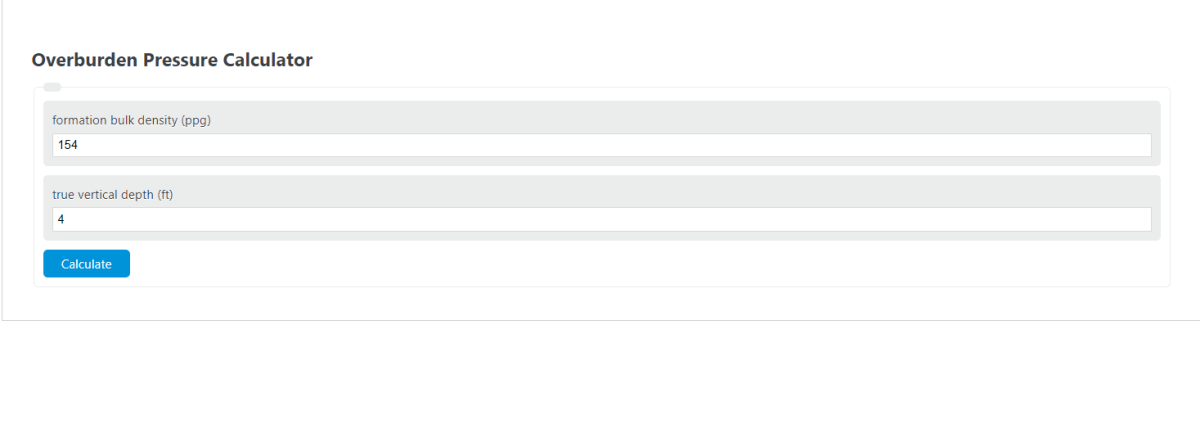Enter the formation bulk density (ppg) and the true vertical depth (ft) into the calculator to determine the Overburden Pressure.
- All Pressure Calculators
- Surge Pressure Calculator
- Differential Pressure Calculator
- Bearing Pressure Calculator
Overburden Pressure Formula
The following formula is used to calculate the Overburden Pressure.
Po = .052 * pb * D
- Where Po is the Overburden Pressure (psi)
- pb is the formation bulk density (ppg)
- D is the true vertical depth (ft)
To calculate an overburden pressure, multiply the formation bulk density by the true vertical depth, then multiply by .052.
How to Calculate Overburden Pressure?
The following two example problems outline how to calculate the Overburden Pressure.
Example Problem #1:
- First, determine the formation bulk density (ppg). In this example, the formation bulk density (ppg) is given as 150.
- Next, determine the true vertical depth (ft). For this problem, the true vertical depth (ft) is given as 500.
- Finally, calculate the Overburden Pressure using the equation above:
Po = .052 * pb * D
Inserting the values from above and solving the equation:
Po = .052 * 150 * 500 = 3900 (psi)
FAQ
What is formation bulk density and how is it measured?
Formation bulk density refers to the density of the geological formation, usually measured in pounds per gallon (ppg). It is typically determined using well logging tools that measure the density of the rock formation in the vicinity of the borehole. These tools emit gamma rays into the formation, and the amount of radiation that is scattered back to the detector is used to calculate the density of the formation.
Why is overburden pressure important in the oil and gas industry?
Overburden pressure, also known as overlying pressure or lithostatic pressure, is crucial in the oil and gas industry for several reasons. It affects the porosity and permeability of rock formations, influences hydrocarbon migration, and impacts drilling operations. Understanding overburden pressure helps in designing appropriate drilling fluids, predicting formation fractures, and optimizing wellbore stability.
Can overburden pressure vary within the same geological formation?
Yes, overburden pressure can vary significantly within the same geological formation due to differences in lithology, depth, and geological history. Variations in sediment types, compaction rates, and tectonic forces can all contribute to changes in overburden pressure. Accurate measurement and modeling are essential for understanding these variations and their implications for exploration and production activities.
